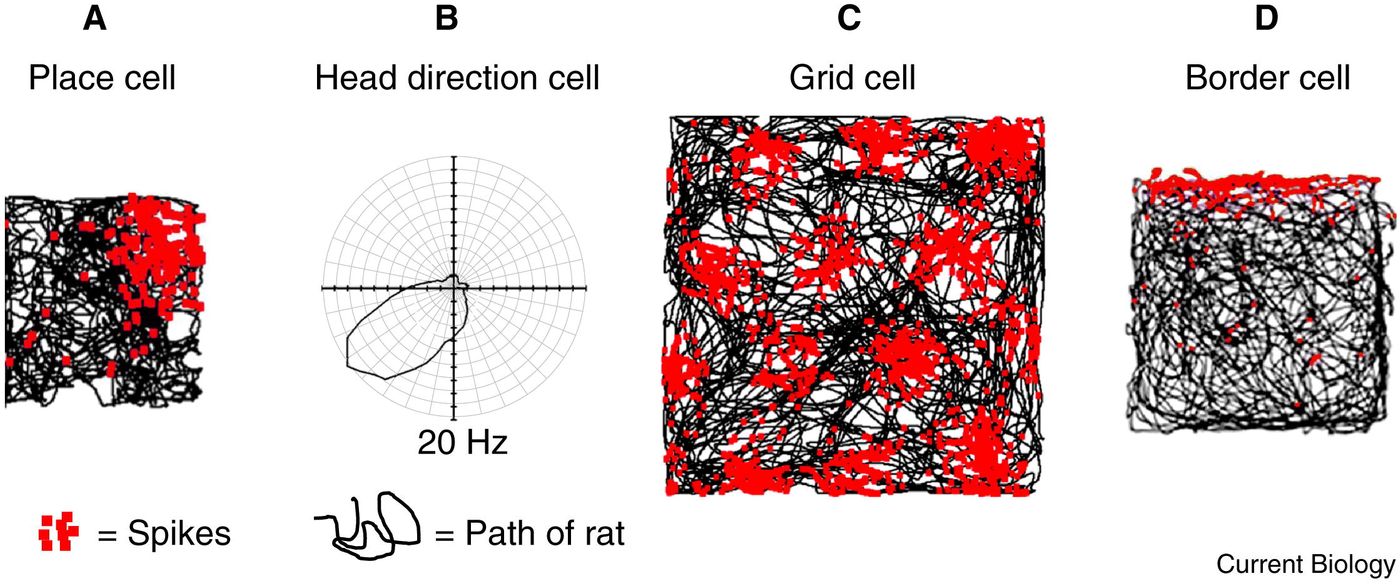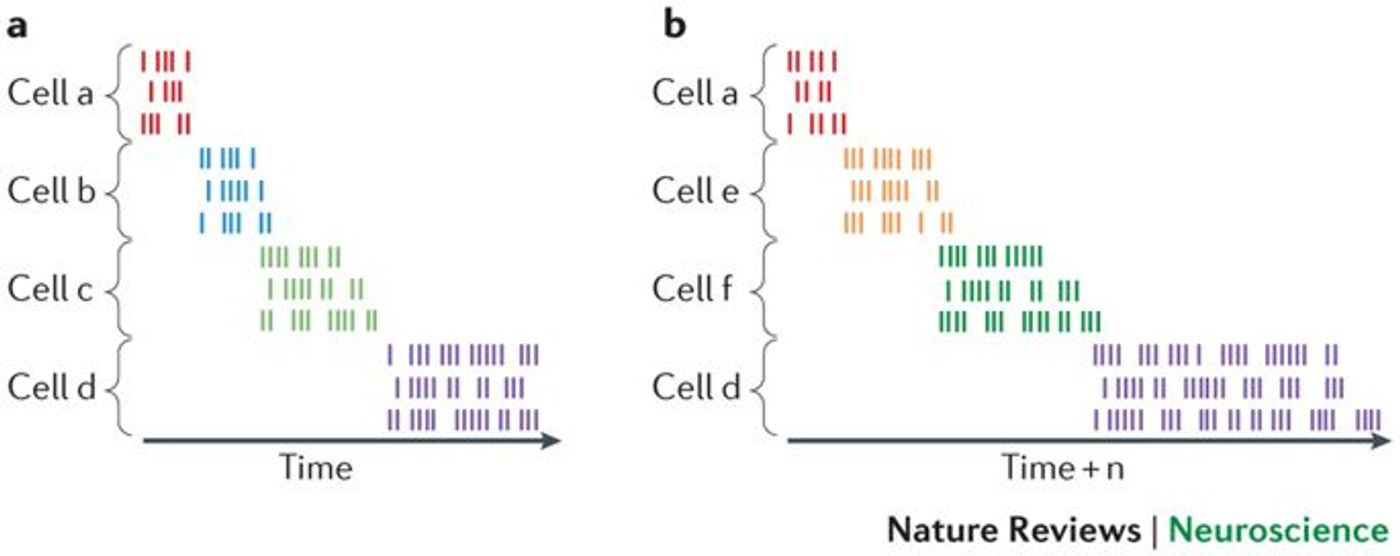How does Brain's GPS work?
Knock Knock! Someone's at the door. We automatically go and open the door maneuvering through the obstructions in the path. How did we do that? How did we know where and how to go? How does the brain perceive the fundamental information, location, and direction needed for getting to the door? Does our mind have a cognitive map to guide? How are the moment-to-moment changes signaled to the brain?
Four major cell types constitute the neural navigational system,
-
Head Direction Cell (HDc): Provide the information on head orientation
-
Grid Cell (Gc): Provide the environmental layout information.
-
Place Cell (Pc): Provide location specific information.
-
Border Cell (Bc): Provide edges information in an environment.
-
Time Cell (Tc): Provide temporal information
The first of these four reported was about Pc's in 1971 by John O’Keefe. Pc's were a subset of hippocampal cells’ that always fired at in a specific location in the environment that was independent of behavioral tasks performed. Next came the discovery of HDc’s. James Ranck first discovered them first in the early 1980’s, but it is not until the 1990’s the general properties were described by Ranck, Taube, and Muller. Research published by O’Keefe in 1996, reported on a subset of Pc’s, that encoded boundary information’s. A computational model was developed (Boundary Vector cell model) to predict the existence of Bc’s based on the changes in Pc’s firing rates to environmental features. Later Bc’s were confirmed within the hippocampus by others in 2004. Lastly, Gc’s were first reported by Hafting et a;l., in 2005 in the entorhinal cortex. Gc’s form a spatial map that represents the environment layout by firing at regularly spaced intervals. Outputs from all the four types of cells providing, location information, layout, boundaries, and orientation allow for the formation of the cognitive map, essentially the brain’s GPS for navigation. All these cells were identified in humans eventually. The image below, taken from Marozzi et al., shows the typical firing patterns of the major cell types in the cognitive map. The red indicates active firing patterns of the cells.
Discoveries of cells resulted in the 2014 Nobel Prize in Physiology or Medicine shared between John O´Keefe and his former students May-Britt Moser and Edvard I. Moser. Watch the video below for understanding more on the spatial information encoding cells.
When we are looking for a location on our GPS, it gives the distance and time it takes to reach that location. So even in our brain’s inner GPS, temporal perspective should be encoded, i.e., knowing what, where and when. Since spatial and temporal coexist, it was proposed that information could be encoded by the same cells. However, recently, given the importance of time encoding, potential a new class of cell types are being proposed to convey the timing information. The image below, taken from the review published on time cells by Eichenbaum et al., shows the neural firing patterns from idealized, simultaneously recorded time cells.
Remember the times, when no smartphones were available, old GPS maps, map printouts before a trip, etc., to help us reach our destinations. Eventually, by whatever means necessary, we would reach the intended target but think about if you can never be able to reach the location. It’s one thing to being lost in new places; it’s another thing not to find the kitchen in your own house. Just thinking about possibilities scares us but this is a constant struggle for individuals who suffer from navigational impairments. Several brain disorders might negatively affect this ability, including ischemic stroke, brain damage, traumatic brain injury, Korsakoff’s syndrome, and Alzheimer's among others. Navigation is critical for human living and traveling the natural neurocognitive mechanisms in both healthy and diseased human’s is of utmost importance.
The study published on Oct 31’st in Journal of Neurophysiology with Jeffrey S. Taube, Department of Psychological & Brain Sciences, Dartmouth College is the most recent in this quest. The authors explore how the HDc’s encode the directional information, specifically the 3D spatial information as HDc ’s signal as previously described in the 2D plane. HDc’s responses in head-fixed rats when subjected to 3D orientations were studied. The observations indicate that HDc’s 2D signal is derived from the 2D gravity-referenced signal anchored to a direction in the horizontal plane.
We have come a long way from the days where there was no information on the cognitive encoding of navigational information. But, we still have a long way to go before we can treat its impairment.










